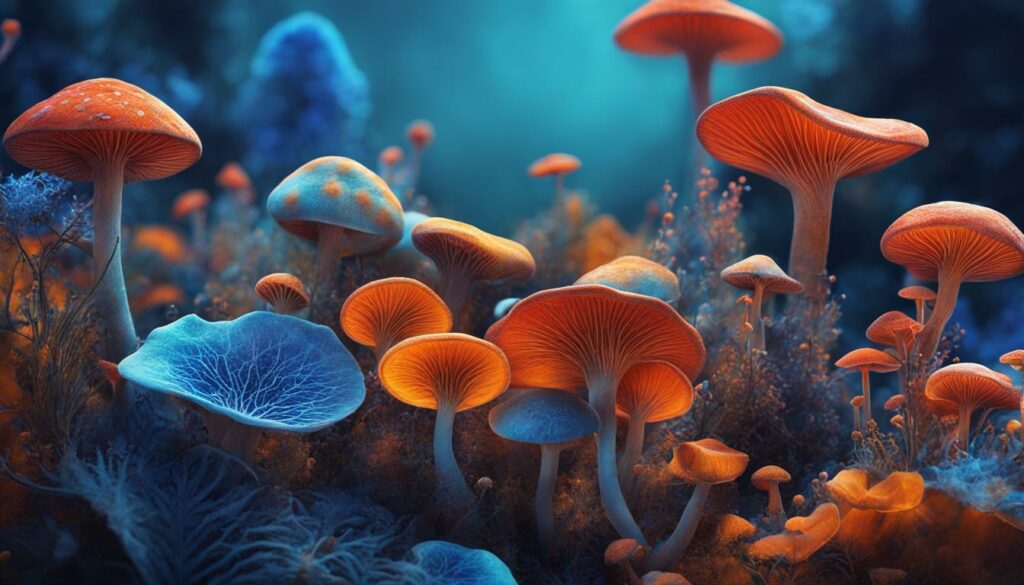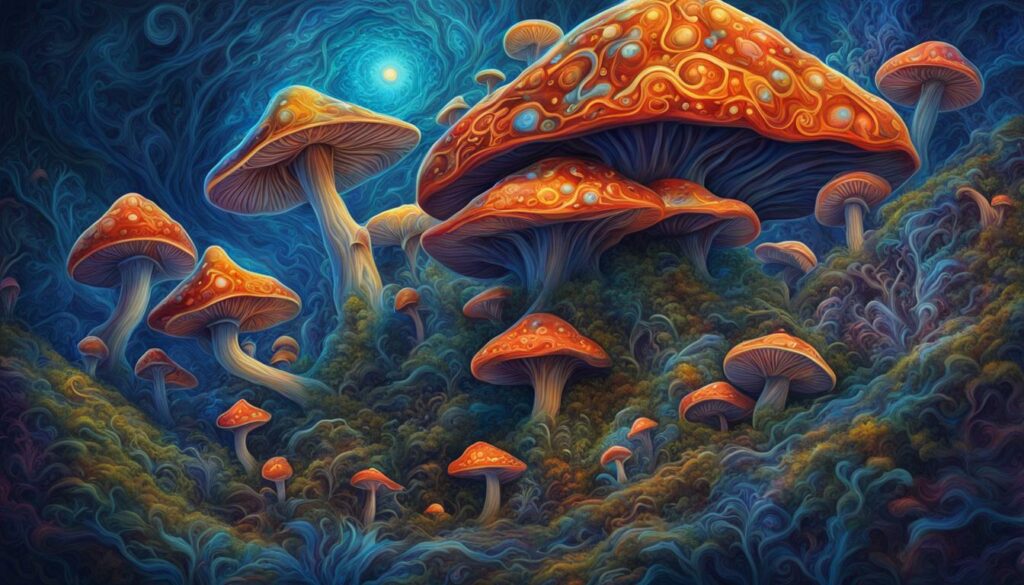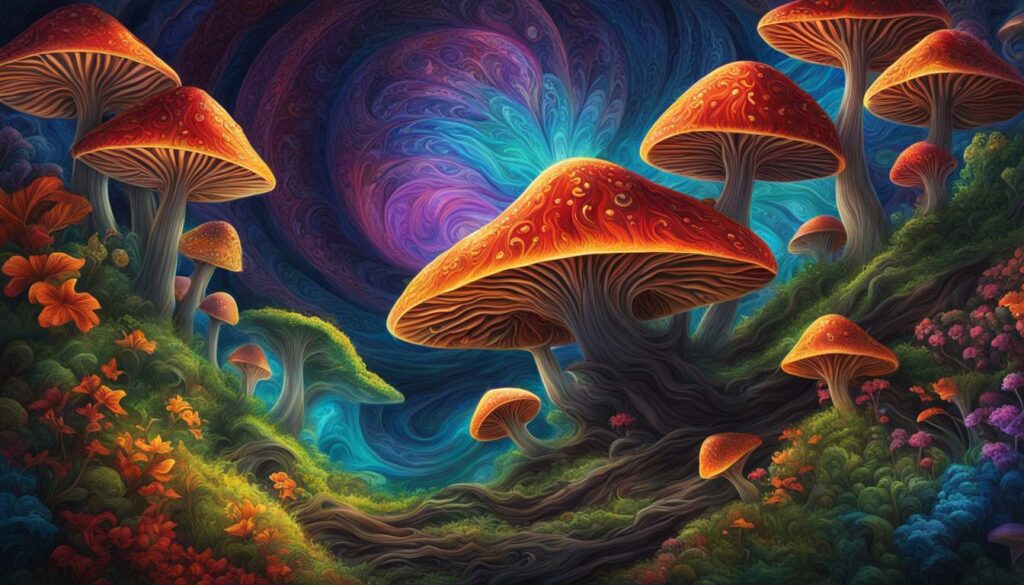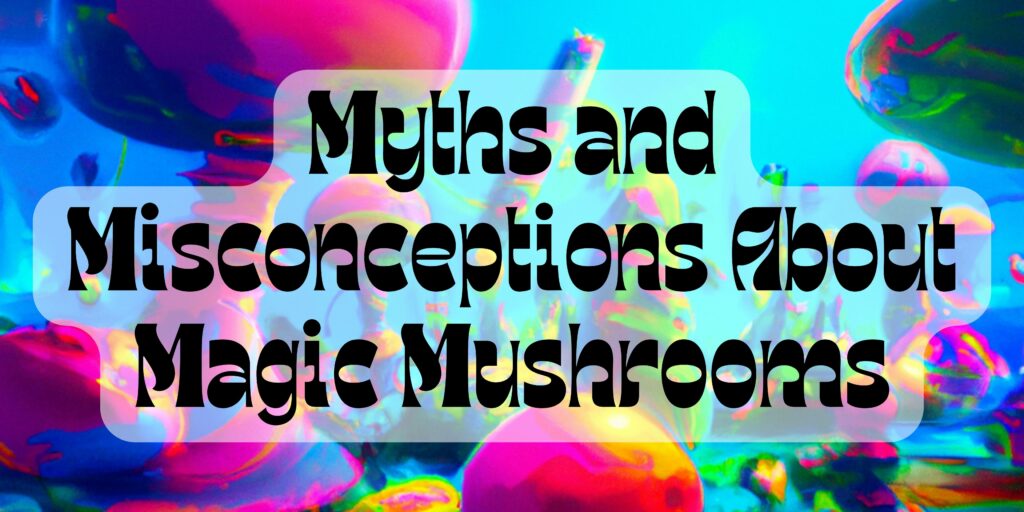Welcome to our exploration of the fascinating world of magic mushrooms, also known as shrooms. Have you ever wondered what these mystical fungi actually do? Join us as we dive into the effects of shrooms, the science behind their psychedelic properties, and their potential therapeutic benefits.
- Magic mushrooms contain psychoactive compounds that induce altered perception and hallucinations.
- The effects of shrooms can vary depending on dosage, set, and setting.
- Psilocybin in magic mushrooms is converted into psilocin in the body, interacting with serotonin receptors in the brain.
- Shrooms have shown promise in treating conditions like depression, anxiety, and addiction.
- There is ongoing research to uncover the therapeutic potential of unknown species of mushrooms.
The Science Behind Shroom Trips
When it comes to the effects of magic mushrooms, it all boils down to the science behind the shroom trip. These fascinating fungi contain a compound called psilocybin, which, when consumed, is converted into psilocin in the body. Psilocin then interacts with serotonin receptors in the brain, leading to a cascade of effects that result in the psychedelic experience.
The specific mechanisms of action are still being studied, but researchers believe that psilocin stimulates parts of the brain involved in perception, mood, and cognition. This stimulation leads to altered brain activity and communication, giving rise to the characteristic hallucinogenic properties observed during a shroom trip.
The Chemistry Behind the Trip
Psilocybin and psilocin interact with serotonin receptors, primarily the 5-HT2A receptors, in the brain. Psilocin’s chemical structure resembles that of serotonin, a neurotransmitter involved in regulating mood, perception, and cognition. By binding to these receptors, psilocin alters the functioning of the brain, leading to profound changes in perception, consciousness, and self-awareness.
Psilocybin and psilocin interact with serotonin receptors, primarily the 5-HT2A receptors, in the brain.
The exact neurological and psychological effects of a shroom trip can vary from person to person, influenced by factors such as dosage, set (mindset), and setting (environment). Some individuals may experience visual hallucinations, distortion of time and space, synesthesia (cross-sensory perception), and a deep sense of interconnectedness with the universe.
The Potential for Therapeutic Applications
The hallucinogenic properties of magic mushrooms have attracted scientific interest for their potential therapeutic benefits. Recent studies have shown promising results in using psilocybin-assisted therapy for treating conditions such as depression, anxiety, and substance use disorders.
During a shroom trip conducted in a controlled and supportive environment, individuals have the opportunity to explore their thoughts, emotions, and past traumas with a fresh perspective. This introspective process, facilitated by the psychedelic experience, can lead to increased self-awareness, emotional breakthroughs, and personal growth.
Recent studies have shown promising results in using psilocybin-assisted therapy for treating conditions such as depression, anxiety, and substance use disorders.
The therapeutic potential of magic mushrooms is still being explored, and further research is needed to fully understand their mechanisms of action and optimize their therapeutic applications. However, the growing body of evidence suggests that shrooms may hold great promise in the field of mental health treatment.
The Therapeutic Potential of Shrooms
Research on psilocybin mushrooms has revealed their intriguing therapeutic potential. Studies have shown that psilocybin-assisted therapy can be effective in treating conditions such as depression, anxiety, and substance use disorders. The shroom experience, under the guidance of trained professionals in controlled settings, allows individuals to explore their thoughts, emotions, and past traumas in a new light.
Psilocybin-assisted therapy offers a unique approach to healing, as it enables individuals to gain insights and perspectives that may have been previously inaccessible. The psychedelic experience induced by shrooms can lead to increased self-awareness, emotional breakthroughs, and personal growth. It allows individuals to confront and process deep-rooted psychological issues, paving the way for transformative change.
It is important to note that these therapies should only be conducted under the supervision of trained professionals. The therapeutic potential of shrooms lies not just in their chemical properties, but also in the comprehensive support provided during a session. Trained therapists help individuals navigate their inner journeys, ensuring safety, integration, and long-term positive outcomes.
| Benefits of Psilocybin-Assisted Therapy: |
|---|
| • Improved mood and well-being |
| • Reduction in symptoms of depression and anxiety |
| • Enhanced self-awareness and emotional intelligence |
| • Increased openness and creativity |
| • Addiction treatment and reduction in substance use |
Psilocybin-assisted therapy offers a profound opportunity for personal growth and healing. It allows individuals to delve into the depths of their psyche and gain new perspectives on their lives, relationships, and challenges. Through a guided and supportive shroom experience, individuals can unlock the potential for positive transformation and find greater meaning and fulfillment.
Shroom Effects on the Brain
Understanding how shrooms affect the brain is crucial for unraveling the therapeutic potential of these fascinating fungi. Neuroimaging studies have provided valuable insights into the changes that occur in the brain during a shroom trip.
One key finding is that psilocybin, the psychoactive compound in magic mushrooms, increases the connectivity between different brain regions. This enhanced connectivity allows for a greater exchange of information and communication, leading to the altered states of consciousness experienced during a shroom trip.
Furthermore, research has shown that psilocybin disrupts the default mode network (DMN) in the brain. The DMN is responsible for self-referential thinking and mind-wandering. By suppressing the activity of the DMN, psilocybin promotes the emergence of new neural connections and diminishes rigid thought patterns. This dissolution of the ego and the connection between different brain regions give rise to the expanded perception and profound insights often reported during a shroom trip.
The Therapeutic Implications
The effects of shrooms on the brain have significant therapeutic implications. The enhanced connectivity and disruption of the DMN provide a unique opportunity for individuals to explore their thoughts, emotions, and past experiences from a different perspective. This can lead to increased self-awareness, emotional breakthroughs, and personal growth.
Moreover, the altered states of consciousness experienced during a shroom trip have shown promise in the treatment of various mental health conditions. Clinical studies have found that psilocybin-assisted therapy can be effective in reducing symptoms of depression, anxiety, and addiction. The profound insights and mystical experiences induced by shrooms have the potential to catalyze transformative changes in an individual’s psychological well-being.
In conclusion, the effects of shrooms on the brain are still being unraveled, but emerging research suggests that they hold great therapeutic potential. By understanding how magic mushrooms interact with the brain, we can harness their effects to facilitate healing and personal growth. However, it is important to approach shroom experiences with caution and under the guidance of trained professionals to ensure safety and maximize the potential benefits.
| Shroom Effects on the Brain | Therapeutic Potential of Shrooms |
|---|---|
| Increases connectivity between brain regions | Effective in treating depression, anxiety, and addiction |
| Disrupts the default mode network | Promotes self-awareness and personal growth |
| Allows for expanded perception | Induces profound insights and transformative experiences |
Table: Summary of the Effects of Shrooms on the Brain and Their Therapeutic Potential.
The Chemistry of Blue Staining Shrooms
Some species of mushrooms, including psilocybin-containing ones, exhibit a blue staining reaction when cut or bruised. This distinctive blue coloration is caused by the oxidation of psilocybin, the main psychoactive compound in magic mushrooms. Recent research has shed light on the fascinating chemistry behind this phenomenon. It has been discovered that the blue pigments formed during the oxidation process are a complex mixture of linked psilocybin oxidation products, similar to the dye indigo used to produce blue jeans.
The exact ecological function of these blue pigments in mushrooms is still unknown, and further research is needed to unravel this mystery. However, there are several theories that researchers have proposed. One hypothesis suggests that the blue staining may act as a defense mechanism against predators, deterring them from consuming the mushrooms. Another theory speculates that the blue pigments may play a role in protecting the mushrooms from microbial infections or UV radiation.
“The blue staining reaction in mushrooms is truly fascinating. It’s akin to a natural chemical reaction that produces a vibrant blue hue, captivating both scientists and nature enthusiasts alike. Understanding the chemistry behind this phenomenon not only adds to our knowledge of mushrooms but also highlights the intricate beauty of the natural world.” – Dr. Emily Richards, Mycologist
Blue Staining Mushrooms and Psilocybin Oxidation Products
Researchers continue to study the blue staining reaction in mushrooms to gain a deeper understanding of the specific psilocybin oxidation products that contribute to the blue color. By identifying and characterizing these compounds, scientists aim to uncover their potential biological activities and ecological significance. This research could provide valuable insights into the evolution of mushroom pigments, as well as their chemical properties and functions.
| Psilocybin Oxidation Products | Chemical Structure | Potential Biological Activities |
|---|---|---|
| Psilocin |  |
Psychoactive effects, serotonin receptor activation |
| Norpsilocin | Potential anti-inflammatory properties | |
| Psilocybin N-oxide |  |
Role in oxidative stress response |
Research into the blue staining reaction and the psilocybin oxidation products is an exciting field with potential implications for both natural product chemistry and pharmaceutical drug development. By delving deeper into the chemistry of blue staining shrooms, scientists hope to uncover new insights into the fascinating world of psychedelic mushrooms.
Uncovering the Mystery of Unknown Mushrooms
As researchers delve into the world of mushrooms, they continue to uncover a vast array of unknown species with potential psychoactive properties. These mysterious mushrooms captivate the imagination and fuel the never-ending exploration into their effects on the brain and human consciousness. Despite decades of research, there is still so much we do not know about these enigmatic fungi.
With their intriguing properties and potential therapeutic applications, these unknown mushrooms leave scientists and enthusiasts alike eager to unveil their secrets. The ongoing pursuit of understanding these mysterious fungi highlights the awe and wonder that surrounds them. Each discovery brings us closer to unraveling the mysteries of these uncharted realms.
When studying unknown mushrooms, researchers employ various methods, including visual identification, DNA analysis, and chemical profiling. This multidisciplinary approach allows scientists to piece together the puzzle of each species, shedding light on their unique characteristics and potential benefits.
Exploring the mystery of unknown mushrooms is an adventure that continues to fascinate researchers and enthusiasts alike. With every new finding, we gain a deeper understanding of the incredible diversity and potential applications of these enigmatic fungi. The exploration of these mysterious mushrooms will undoubtedly lead us to exciting new discoveries and further expand our knowledge of the natural world.
Conclusion
In conclusion, the effects of magic mushrooms, commonly known as shrooms, can vary for each individual. These fungi have been found to induce altered perception, hallucinations, and heightened emotions during a shroom trip. However, it is important to note that these experiences should be approached with caution and in controlled settings.
Scientific research has revealed the therapeutic potential of magic mushrooms in treating various mental health conditions. Studies have shown promising results in using shrooms to address depression, anxiety, and addiction. The psychedelic experience induced by these mushrooms allows individuals to delve into their thoughts, emotions, and past traumas, leading to increased self-awareness and personal growth.
Furthermore, the chemistry of blue staining mushrooms has captivated researchers. The blue coloration observed is due to the oxidation of psilocybin, the primary psychoactive compound in magic mushrooms, and the exact ecological function of these blue pigments is still unclear. Additionally, the exploration of unknown mushroom species with potential psychoactive properties continues to drive scientific curiosity.
As the field of psychedelic research expands, there is hope for a deeper understanding and utilization of the therapeutic benefits offered by magic mushrooms. It is crucial to conduct further studies and investigations into the shroom trip experience, the therapeutic potential of these fascinating fungi, and their role in the workings of the human brain.
FAQ
What are the effects of magic mushrooms?
The effects of magic mushrooms can vary from person to person but often include altered perception, hallucinations, and heightened emotions.
Do shrooms have therapeutic potential?
Yes, scientific research has shown that shrooms have therapeutic potential in treating conditions such as depression, anxiety, and addiction.
How do magic mushrooms affect the brain?
Magic mushrooms increase the connectivity between different brain regions and disrupt the default mode network, leading to altered states of consciousness and expanded perception.
What causes blue staining in mushrooms?
Blue staining in mushrooms is caused by the oxidation of psilocybin, the main psychoactive compound in magic mushrooms.
What is the function of the blue pigments in mushrooms?
The exact ecological function of the blue pigments in mushrooms is still unknown but they could potentially play a defensive role against predators.
Are there still unknown species of psychoactive mushrooms?
Yes, researchers continue to explore the vast diversity of mushrooms and uncover new compounds and potential therapeutic applications.




